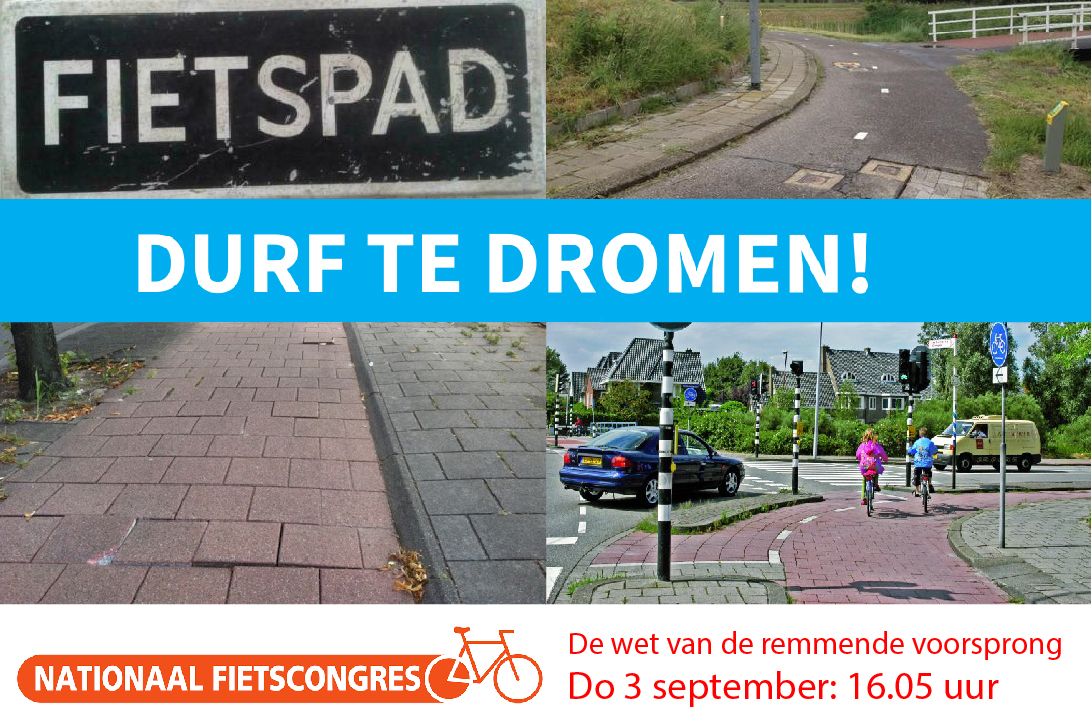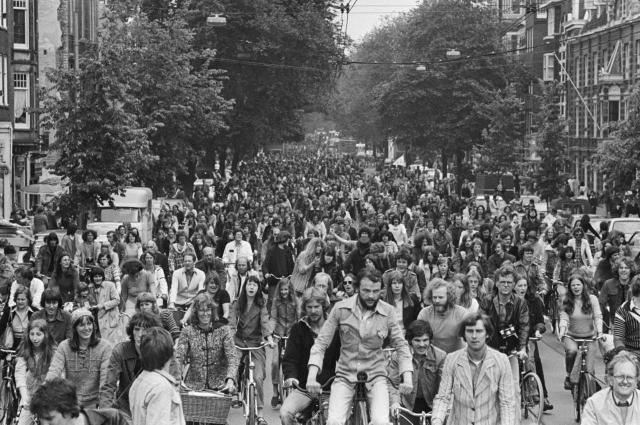‘I have a dream’ – the relevance of ingenuity
November 2020
Autumn is traditionally a time of the year that Dutch traffic engineers meet at specially organised events to exchange ideas, policies and experiences. Because of Covid-19, this year’s events were moved online. We offered an online presentation about the importance of ingenuity. Below, you can read a summary of this presentation.
In the 1970s, Dutch campaigners fought a fierce battle to reduce road fatalities among children. They took the streets in their thousands in a ‘Martin Luther King’-style to take a stand against the way how streets and open spaces were redesigned just to make way for cars, with pedestrians and cyclists being pushed into the margins. This movement has given the Netherlands a huge lead in the field of cycling infrastructure. Dutch citizens today are generally healthier then the public of other countries and cycling is big business, a contributor to the Dutch economy in its own right.
At the same time though, the Dutch cycling ecosystem regularly seems to run on its maximum capacity. Bicycle traffic jams do now occur during peak hours, making people to decide to take the long way around, reducing their number of journeys or even choosing a different mode of transport. Also, the diversity of cycle path users has increased rapidly. Cargo bikes, e-bikes and electric scooters have changed the traditional dynamics on Dutch cycle paths. To meet these challenges, Dutch authorities often refer to what they are used to, with similar solutions known from the world of motorised traffic. So, to meet greater demand, cycle paths are widened and even large cycling roundabouts are created, just as we do with wider roads for cars and new runways for airports.
A broader view on mobility and also questioning our principles can take us further though in solving the “luxury problems” of the Dutch cycling ecosystem. It may be time that even the Dutch start to look further afield for new ideas to recreate their original ingenuity of the 1970s. Martin Luther King said ‘I have a dream!‘, in Dutch we may say in this context ‘Durf te dromen’! Below, we look at three different non-Dutch approaches for inspiration.
Paris, France: The “15 Minute City”
In the Netherlands, the focus within mobility is often on infrastructure. The idea is that if there is more, better and more comfortable infrastructure, we can cover greater distances faster. In Paris, this idea is reversed: how can we ensure that all daily amenities are within 15 minutes walking or cycling distance of every resident? The focus will thus be on the presence of facilities. Not neighborhood where people live alone and where the streets are deserted during the day, but vibrant communities with corner shops, schools, health centers, culture and entertainment always within easy reach. Ljveability instead of mobility and it boosts the local economy too!
Budapest, Hungary: the people’s bridge!
Several bridges over the Danube can be found in Budapest. The iconic Liberty Bridge is closed to car and tram traffic for four weekends during the summer. The bridge is then used for all kinds of activities from picnic to yoga, from day drinking to religious celebrations. This shows that with a little creativity and administrative will, mobility infrastructure can be transformed. This transformation does not have to be permanent immediately, but can also take place seasonally. With timely communication, nuisance is kept to a minimum and as many citizens as possible benefit from the extra living space. Such events inspire people to break with habits and also creates new economic opportunities.
Brussels, Belgium: Streets for people
Brussels also has a flexible approach to infrastructure, depending on local needs. A “street at play” is only accessible to local traffic on certain days and times, so that children can play safely on the street. This concept has recently been expanded to include “summer streets”, where local citizens submitted ideas for their street. The ideas ranged from cooking workshops to concerts, from inflatable pools to game libraries. These streets are a success in 70 (!) places in the city, according to the mobility minister because “the residents wanted and manage this”. The respected Belgian urban planner Jan Gehl pointed out: “There are many examples in the world that prove that you must first show people what is possible, before they want it too”.
Pathways to ingenuity
Keeping these three examples in mind, we have drawn up four pathways to keep the ingenuity in our mobility planning alive. At Loendersloot, we apply these in our daily routines to make that little bit extra possible:
‘I have a dream!’: Often, it is a crisis that make people think outside the box again. The Dutch cycling revolution of the 1970s was also helped by the presence of an oil crisis, forcing the government of the time to encourage more sustainable means of transport again, with the protesting masses providing the solution. Today, we see Covid19 reshaping the way how we work and study, with tremendous changes to our mobility needs. To be able to dream we literally need more breathing and thinking space, which leads to clear ideas about how we really want to design public space.
‘The job is never done.’ The current issues with Dutch cycling infrastructure demonstrate that innovation is always required. Further thinking is necessary to meet the challenges of new bicycle-inspired vehicles, a changing and ageing population and for example the advent of new ownership models (the lease bicycle). All this is causing dynamics to change. To be able to keep moving, conversing and developing it is good to look around for smart ideas from elsewhere.
‘Aim high!’: Don’t set yourself on an “average” solution in advance. If you set out to satisfy everyone to some extent, everything will remain broadly the same. Guidelines, an indispensable tool in our work, should be used consciously. Always remember that these are based on past performance and offer solutions sufficient for the average situation. Therefor guidelines will never be progressive. So first consider whether you want an average solution or a progressive solution. Work from your ideal image and then look for the tools that match it, not the other way around.
‘You don’t live on a desert island.’ Traffic engineering is not ‘Desert Island Discs’. Journeys facilitated by traffic engineers are influenced by many other factors. Spatial planning, public space and environment departments can all bring different perspectives to a case. Putting questions to local users and observing their behaviors can be a great learning tool as well. Often, traffic engineers act in isolated capacities, but it is OK to share with professionals and people alike. It will bring different perspectives on the good work you do!
The online presentation about the relevance of ingenuity can be watched below. Note this video is in Dutch language only.



